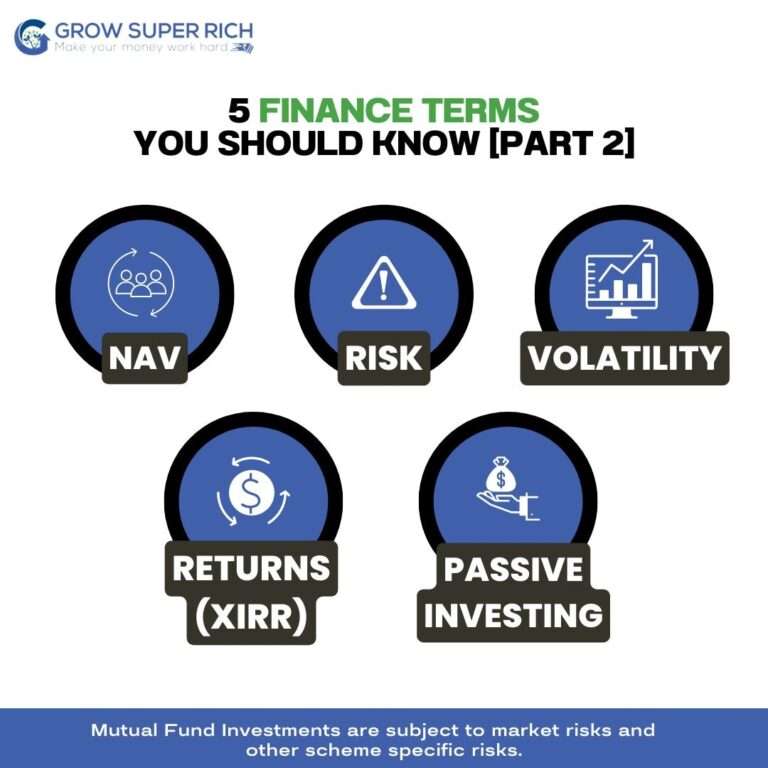Need for Portfolio Maintenance
After doing the tough job of getting clarity on your financial goals, reviewing different investment options– the next step is to understand what are the core elements of Portfolio maintenance.
Even best investment portfolio needs maintenance. It is an important aspect of mutual fund investing to keep fine tuning ones portfolio. Portfolio Maintenance involves regularly reviewing and making adjustments to one's portfolio in order to ensure that it aligns with one's financial circumstances, goals, and risk tolerance already covered in investment insights.
This includes understanding different investment horizons, appropriate time horizon for investments, appropriate savings rate, long term orientation and diversifying investment portfolio to reduce risk.
All of this needs to be done with another objective to reduce overall transaction costs: By investing in low cost mutual fund portfolio and also avoiding unnecessary transaction costs . Understanding and implementing the above ideas as part of Portfolio review sets investors on their journey of achieving their goals in most efficient manner possible.
This article focuses on top 5 best practices of Portfolio Maintenance
1. Financial Circumstances Review
Normal 0 false false false EN-IN X-NONE X-NONE /* Style Definitions */ table.MsoNormalTable {mso-style-name:"Table Normal"; mso-tstyle-rowband-size:0; mso-tstyle-colband-size:0; mso-style-noshow:yes; mso-style-priority:99; mso-style-parent:""; mso-padding-alt:0cm 5.4pt 0cm 5.4pt; mso-para-margin-top:0cm; mso-para-margin-right:0cm; mso-para-margin-bottom:8.0pt; mso-para-margin-left:0cm; line-height:107%; mso-pagination:widow-orphan; font-size:11.0pt; font-family:"Calibri",sans-serif; mso-ascii-font-family:Calibri; mso-ascii-theme-font:minor-latin; mso-hansi-font-family:Calibri; mso-hansi-theme-font:minor-latin; mso-bidi-font-family:"Times New Roman"; mso-bidi-theme-font:minor-bidi; mso-fareast-language:EN-US;}
The first step in maintaining a mutual fund portfolio is to review any changes in one's financial circumstances. This might include changes in income, expenses, or other financial obligations. Based on these changes, one may need to adjust the allocation of assets in their portfolio to ensure that it remains aligned with their overall financial goals.
.Normal 0 false false false EN-IN X-NONE X-NONE /* Style Definitions */ table.MsoNormalTable {mso-style-name:"Table Normal"; mso-tstyle-rowband-size:0; mso-tstyle-colband-size:0; mso-style-noshow:yes; mso-style-priority:99; mso-style-parent:""; mso-padding-alt:0cm 5.4pt 0cm 5.4pt; mso-para-margin-top:0cm; mso-para-margin-right:0cm; mso-para-margin-bottom:8.0pt; mso-para-margin-left:0cm; line-height:107%; mso-pagination:widow-orphan; font-size:11.0pt; font-family:"Calibri",sans-serif; mso-ascii-font-family:Calibri; mso-ascii-theme-font:minor-latin; mso-hansi-font-family:Calibri; mso-hansi-theme-font:minor-latin; mso-bidi-font-family:"Times New Roman"; mso-bidi-theme-font:minor-bidi; mso-fareast-language:EN-US;}
Also consider any upcoming financial goals. This might include things like buying a house, paying for a child's education, or planning for retirement. By taking these goals into account, one can ensure that their portfolio is positioned to help them achieve these objectives.
2. Risk Tolerance behavior
Another important aspect of portfolio maintenance is to review one's own long-term risk orientation. This might include considering factors such as one's age, investment horizon, and overall risk tolerance as part of the review. Based on this review, one may need to adjust the allocation of assets in their portfolio to ensure that it aligns with their long-term risk orientation.
One key input to this assessment of Risk tolerance behaviour is to be recall any market downturns that may have occurred in the past, and to consider one's own emotional and actual reaction to these events. By understanding how one responds to market downturns, one can better prepare for and manage these situations in the future.
Our reactions to market downturns also are a true barometer of our correct long term Risk tolerance and our portfolio needs to be closer to this. Similarly it is also important to rebalance to planned Portfolio proportions of Risk free and Risky assets as originally planned in bull markets. One key purpose is to take the profits from rising asset class and return our portfolio risk characteristics to planned levels.
3. Cash Needs
When maintaining a mutual fund portfolio, it's also important to consider any upcoming cash needs to meet financial goals. For example, if one has a big expense coming up, such as a home renovation, car purchase they may need to plan for this by selling some of their mutual fund holdings in advance.
Depending on market need some specific strategies can also be made to meet expenses partly by loans and partly by selling assets. This allows for assets to recover particulalrly around market down turns.
4. Tax and Transaction Costs
Investment portfolio should ideally be maintained with least cost for both transactions and taxes. As much as possible these should be done within tax sheltered accounts like NPS as part of allowable switches. And in case some of these need to be done outside tax sheltered accounts consider ways to minimize tax of any changes made to the portfolio.
The key taxes to consider are things like short term and long term capital gains taxes, and long term taxes with inflation indexation, dividend taxes, and other tax considerations. Tax gain harvesting to extend allowed by tax rules and Tax loss harvesting is another key aspect to be planned as part of overall transaction.
5. Performance and Diversification
Summary
In summary, maintaining a mutual fund portfolio requires regular reviews of one's financial circumstances, goals, risk tolerance, and market conditions, as well as consideration of transaction costs, taxation and cash needs.
By regularly monitoring and adjusting their portfolio, investors can ensure that it is aligned with their overall financial goals and is well-positioned to weather any market downturns as well as benefit from the upside of bull runs.




